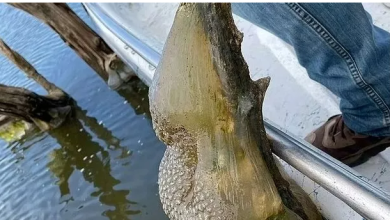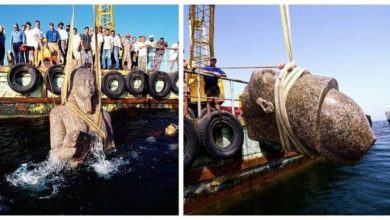8 Abandoned Places In New Mexico [MAP]
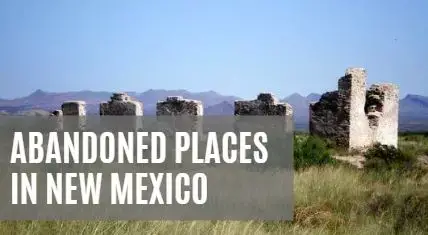
Hunting for abandoned places in New Mexico? You’re in the right place. Below are 8 of my favorite abandoned places across the state.
The Anarchist’s Guide To Exploration
If you’re looking to dive deeper into the world of urban exploration, this book is for you. Learn how to uncover more abandoned places and the techniques used to capture their beauty.
1. Fort Bayard
32.79696, -108.15064
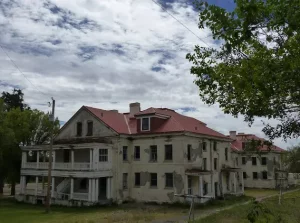
History:
The Buffalo army originally utilized this fort to protect early settlers from Apache attacks. It was later utilized as a tuberculosis sanatorium, a jail for German prisoners of war during World War II, and a mental health facility. The Apaches were also fought by Buffalo Soldiers stationed here.
What’s left?
The area is now uninhabited. You can drive about and see buildings that appear to be functional and well preserved from a distance but are clearly suffering from the effects of time and neglect upon closer study. Thankfully, attempts to preserve the fort are begun, and visits are accessible.
2. The Perfect Man Shrine
31.82898, -107.64989
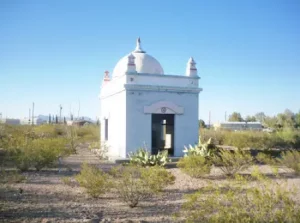
History:
A scaled-down duplicate of the Tomb of Meher Baba, an Indian spiritual guru who was the focus of a significant spiritual movement in the twentieth century, is located deep in the New Mexico desert, three miles from the Mexican border.
Baba’s following was estimated to be in the hundreds of thousands, if not millions, and was primarily centered in India, with pockets in the United States, Europe, and Australia. Earl Starcher, a Miami guy, gave up his job as an air traffic controller after finding Mehar Baba’s works in the early 1960s. He set out to build a copy of Baba’s mausoleum.
Starcher died in 1994 in Myrtle Beach, South Carolina, before the shrine was finished. The tomb is encircled by pillars that were supposed to be part of a wall that was never built. In both English and Spanish, a sign greeting tourists to “The Shrine to the Perfect Man” is now nearly illegible.
What’s left?
In the harsh desert sun, the external paint and statement “Mastery in Servitude” have flaked off. The shrine itself is made of cinderblock and concrete and is anticipated to last for many years. Of all the abandoned places in New Mexico, the Tomb of Meher Baba shrine is by far one of the most unique places.
3. Budville Trading Post
35.06927, -107.52567
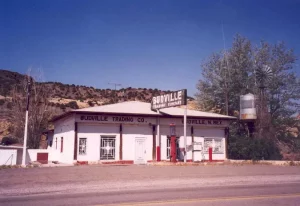
History:
Howard Neal ‘Bud’ Rice was a charismatic figure in Budville (his hometown), a little town located 46 miles west of Albuquerque, New Mexico, on a calm stretch of Route 66. Rice and his wife, Flossie, began establishing and operating several enterprises catering to travelers along Route 66 in 1928, two years after it was designated as part of the US Highways System.
Between Albuquerque and Grants, there was a store, trading post, gas station, and the lone vehicle repair shop and wrecking business. Rice was well-liked in the community, but he wasn’t completely honest, and he frequently used his position to further his numerous business interests by exploiting Route 66 tourists.
Rice’s shady behavior, however, quickly came to a stop. A stranger entered the trade post on a calm evening in November 1967 and shot and killed Rice. Rice’s widow ran the trading station and other family companies for another 12 years after he died, until she died in 1979.
What’s left?
It is still abandoned, although the present owners dwell in the adjacent house where the Rice’s used to live. The building is perhaps one of the most photographed locations along the New Mexico portion of historic Route 66 because of its shady past.
4. Dawson Ghost Town
36.66419, -104.77471
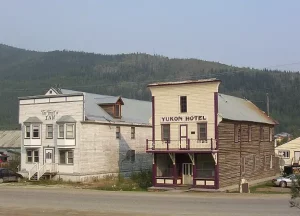
History:
Dawson, a coal town in the early 1900s that was abandoned after two tragic mining explosions killed hundreds of people, has only one road in and out. The cemetery is the town’s only remaining relic, and the small dirt road leads to it.
The victims of the mining catastrophes in 1913 and 1923, many of them young immigrants seeking a better life in the United States, are buried in this lovely resting place. Hundreds of skewed white crosses and rusted iron gates litter the land at the base of various buttes.
What’s left?
The only sound you’re likely to hear is the breeze as it snakes through the overgrown grass. It’s incredibly quiet, peaceful, and eerie. You might spot antelope and other large species roaming in the distance if you’re quiet and attentive.
Of all the abandoned places in New Mexico, Dawson is my favorite ghost town as there are tons of original buildings still standing.
5. De Anza Motor Lodge
35.07907, -106.59621
History:
Charles Wallace, who had previously run a trading post in Zuni pueblo in the 1920s, built the De Anza in 1939. The De Anza Motor Lodge on Route 66 was a burned-out, run-down motel that would have been demolished long ago if not for the magnificent Native American treasures in its basement.
Though it was named after a Spanish Conquistador, the De Anza’s main purpose was to serve as an Indian trading post. The “Turquoise Room,” a cafe with thousands of shards of turquoise embedded in the linoleum floor, was legendary. The De Anza was once a bustling motor lodge, restaurant, and Indian Trading Post. It is well known for being the location of one of the Breaking Bad sequences.
What’s left?
It is now a decaying old structure that was on the verge of being demolished to make room for a grocery shop. The De Anza would be a memory if it weren’t for the priceless, one-of-a-kind Native American artwork in the basement conference room. The land, however, has been renovated as a high-end residential complex.
6. Glenrio Ghost Town
35.17842, -103.04303
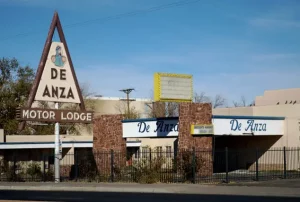
History:
Glenrio, a Route 66 town spanning Texas and New Mexico’s state borders, was formed in 1901 by the many railroads that passed through it. Glenrio is nowhere near a valley or a river, despite its name being derived from the Scottish term “glen” and the Spanish word “rio.”
The mail would arrive at a railroad station on the Texas side, but it would have to be transferred to the New Mexico post office. All the bars were on the New Mexico side because the Texas side was part of a dry county. Glenrio was a popular stopping area between Amarillo and Tucumcari when Route 66 ploughed its way across the Southwest.
Glenrio was heavily hit when the Rock Island Railroad depot closed in 1955, but not as hard as when Interstate 40 replaced it. Glenrio’s traffic has dried up. Only two residents remained in the 1980s. They left not long after, and Glenrio has been a ghost town ever since.
What’s left?
All that is left of the town now are a few dilapidated structures. The State Line Motel and the Little Juarez Diner are still standing. Depending on which direction you’re traveling, the sign says, “First in Texas” or “Last in Texas.”
I visited this place on my trip out west, and Glenriot was one of my favorite abandoned places in New Mexico along Route 66.
7. Kelly Ghost Town
34.0852, -107.2015
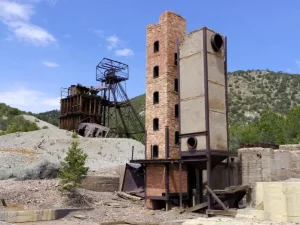
History:
Kelly, a ghost town near Magdalena, is a favorite destination for rockhounds and those interested in mining history.
Kelly had a population of 3000 people when it was at its peak. The mining town had a variety of facilities, including churches, schools, and hotels. The village was unable to survive once the ore had been totally mined.
What’s left?
Walls, mining equipment, and a cemetery are now all that are left. Visitors can take Kelly Road from Magdalena to reach this deserted town. The majority of people park at the small church and walk from there.
8. Fort Craig
33.63453, -107.01425
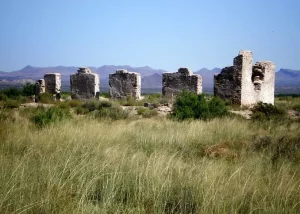
History:
The Treaty of Guadalupe Hidalgo, signed in 1848, stipulated the construction of a chain of forts along Mexico’s new border with the United States. The 3rd United States Infantry Regiment began building a new fort on a hill nine miles downstream from Fort Conrad in 1853. Captain Louis S. Craig, an officer in the Mexican–American War who was assassinated by deserters in California in 1852, was honored with the new fort’s name.
At best, life at distant Fort Craig was miserable and lonely, and at worst, it was deadly. The buildings were a constant source of agony for the soldiers, as evidenced by litanies of complaints about leaky roofs, disintegrating walls and chimneys, congested circumstances, and filth from crumbling dirt roofs and muddy floors found in the records.
Fort Craig had grown to nearly 2,000 soldiers by July 1861, making it the largest fort in the Southwest. It served as the headquarters for US Army campaigns against the Gila and Mimbres Apaches between 1863 and 1865. In 1885, Fort Craig was permanently abandoned.
What’s left?
The BLM operates a visitor center at the Fort Craig Historic Site. Fort Massacre, a 1958 Hollywood Western movie was set in 1879 around “Fort Crane,” a fictional analog for Fort Craig. Fort Craig was auctioned off in 1894 to the Valverde Land and Irrigation Company, which was the only bidder.
Since the property is maintained by the BLM, it’s one of the best legal abandoned places in New Mexico to explore.
